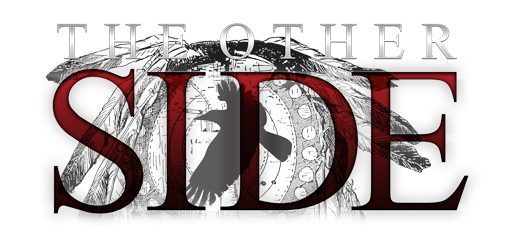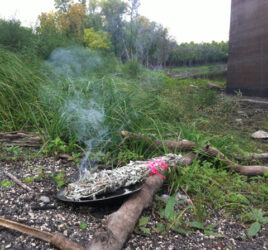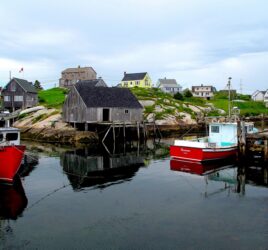
Extra Research for Season 5 – Episode 1 – The Unnameable
History
The Mi’kmaq people have inhabited the land in Prince Edward Island for over 10,000 years. The people lived very differently from how they do today. They lived a simple life. At the time the Mi’kmaq only hunted and gathered enough food to provide for their people. No part of the animal they hunted was wasted. Clothing was made from hides, tools and weapons were made from bones, their wigwams were built from birch bark and animal hides.
Materials from the land (such as birch bark) were used to build their canoes (and still used today), they invented snowshoes to let them hunt larger animals without sinking into the snow. Plants and roots were gathered for food, dyes, and medicines. The knowledge and skills to use everything needed to survive has been passed down from one generation to the next.
When the white men first came they were hailed by the Mi’kmaq with the greeting “Nikmaq” meaning “kin friends”. The term was adopted by the white men and over the years the word gradually changed in punctuation and was written “Mi’kmaq”.
The band government was originally known as “L’nui Minegoo” or the Indian/People’s Island, and later known as the Lennox Island Reserve or the Lennox Island Band. It was named after Charles Lennox, Duke of Richmond. There were only two or three families residing on Lennox Island, specifically the Chief Francis Francis family.
Mingoo Fisheries
Thousands of years ago, before European settlement of North America, the ancestors of today’s Mi’kmaq people were able to fish freely and harvest shellfish in the shallow bays and harbours of PEI. However, after the European settlement and treaties were signed, they were not allowed to. In 1999 the treaties from 1760 and 1961 were revisited and re-interpreted by Mi’kmaq and Maliseet communities and ruled that Mi’kmaq should now only have the right to fish in pursuit of a “moderate livelihood”.
Once the updated treaties were signed, Aboriginal nations began entering the Atlantic lobster fishery alongside non-aboriginal boats, selling their catch to processing plants scattered across Prince Edward Island. Boats owned by the band, as well as independently owned vessels, became participants in the Minigoo fishery now operating on Lennox Island.
Saint Anne Mission
Catholicism was introduced by the French during the late 1500s and early 1600s.
Mi’kmaq Grand Chief Membertou was the first baptised in 1610 at Port Royal and since then there has been a blending of religion and Indigenous spirituality.
The patron saint of the Mi’kmaq is Saint Anne, the grandmother of Jesus. The mission of St. Anne began in 1801 to first minister to the needs of the Mi’kmaq and then second to include the Acadians of the area. Missionary Fathers would visit the Island every year to administer the sacraments. The first church was a log structure erected by the Mi’kmaq themselves. The replacement St. Anne’s church was destroyed by fire in 1842, and the current church was constructed 1895.
Powwows
The powwow is like an annual family reunion. But powwows and other Indigenous ceremonies were banned across Canada during the late 1800s and early 1900s. It wasn’t until a change in the Indian Act in the 1950s that they were able to celebrate once again.
The Mi’kmaq had a song and teaching for everything that happened in their life. If there was a wedding, they had a song, if there was a death, they brought the body up to the house with song. It is all about respect.
These dances celebrated the stories of their proud history. They teach the children about their culture, food, traditions, and language. The children need to be taught their history that is locked in the traditional Mi’kmaq language.
Eagle feathers are sacred to First Nations People across the world. The eagle flies the highest and closest to the creator so when the People pray and do the smudge they raise eagle feathers up to the sky.
— Joanne Schiavoni
Photo credit: Canoe, Lennox Island Mi’kmaq Cultural Centre



